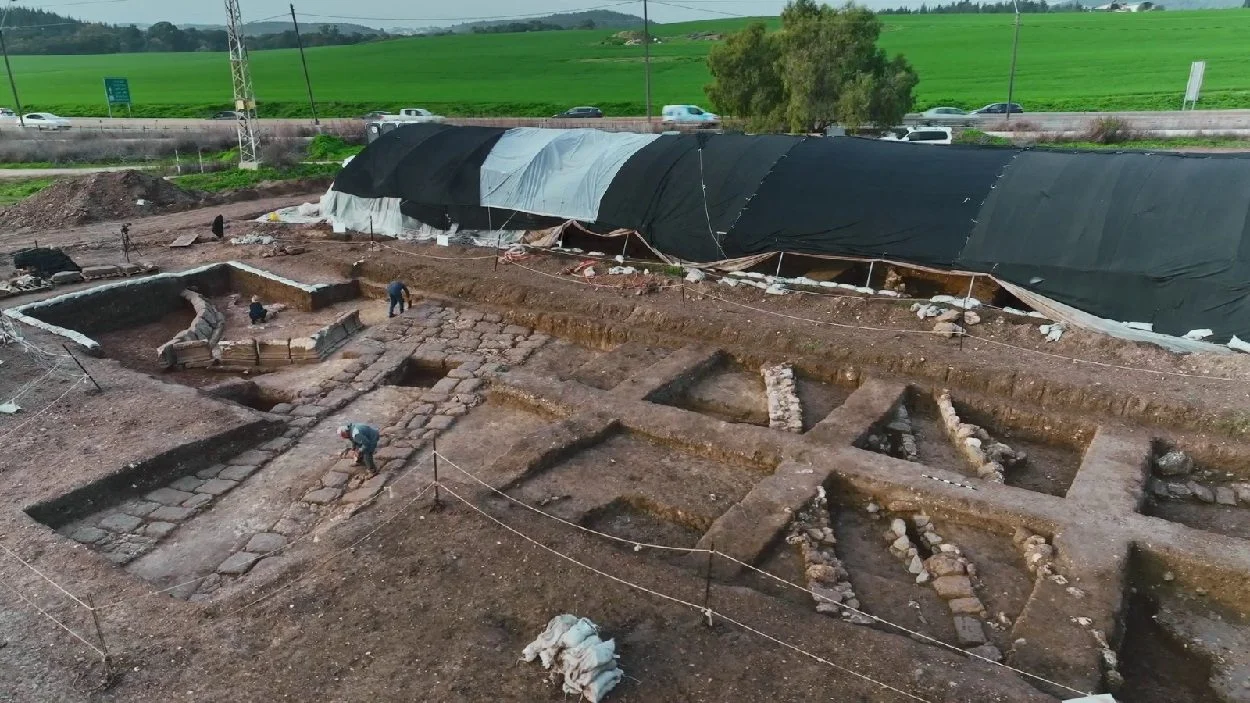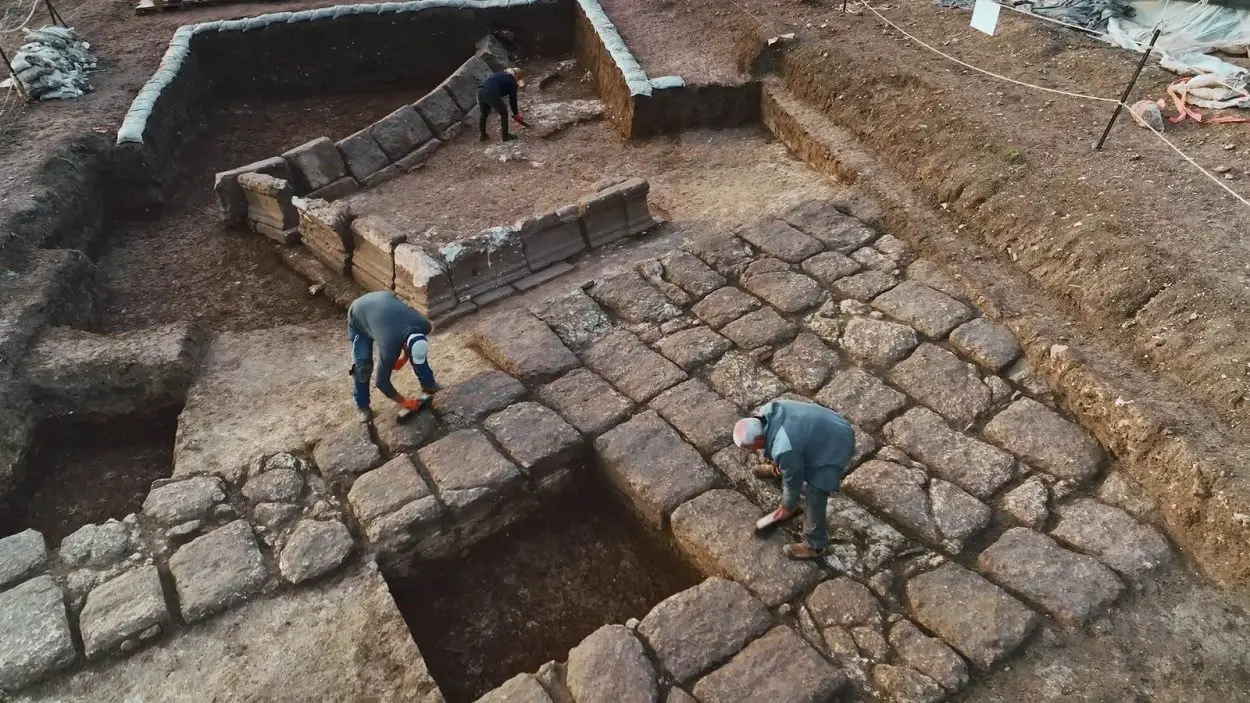Archaeologists from the Israel Antiquities Authority have announced the discovery of a military fortress garrisoned by the Legio VI Ferrata (“Sixth Ironclad Legion”), also known as the Fidelis Constans, meaning “loyal and steadfast”.
The Legio VI Ferrata was first raised by Julius Caesar during his campaign in Gaul, and would go on to accompany Caesar when he travelled to Alexandria to settle the dispute between Cleopatra and Ptolemy XIII.
Excavations at the foot of Tel Megiddo have revealed a 1,800-year-old fortress consisting of the Via Pretoria (main central road within a camp or fortress) and part of a monumental building with a semicircular-shaped podium and stone-paved areas.
Dr. Yotam from the IAA, said: “Two main roads intersected at the centre of the 550 m long and 350 m wide camp. It was from this base point that all the distances along the Roman Imperial roads to the main cities in the north of the country were measured and marked with milestones.”
According to the archaeologists, the fortress was the permanent military base for the the Legio VI Ferrata, housing over 5,000 Roman soldiers who were garrisoned from AD 117 to 300.

Roman military encampments are widely documented in Israel, however, they primarily consist of temporary siege camps or smaller encampments associated with auxiliary divisions. However, according to Dr. Tepper from the IAA, the discovery at Tel Megiddo is a complex legionary fortress, one of the first examples of its kind used for permanent occupation.
Excavations also uncovered a variety of artefacts, both military and domestic, including: coins, weapon fragments, pottery shards, glass fragments, and a large quantity of roof tiles.
“The roof tiles, some of which were stamped with the Legio VI Ferrata stamps, were used for roofing buildings, paving floors, and coating walls. The technology and building techniques, and the weapons that the Legion brought with them reflect the specific Roman Imperial military footprints,” added Dr Tepper.
Header Image Credit: IAA





